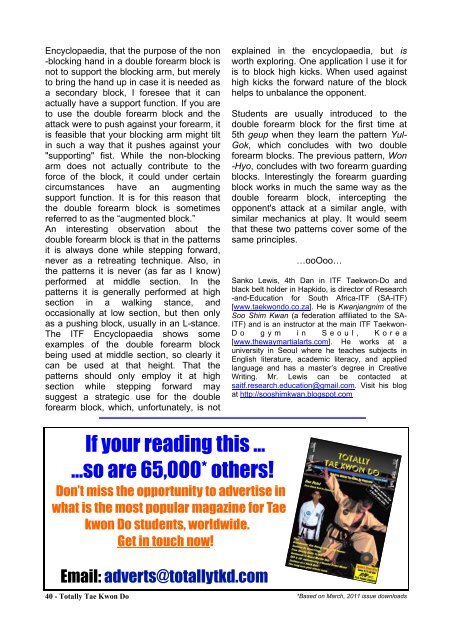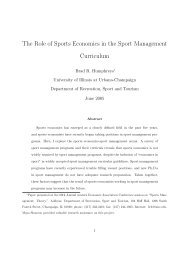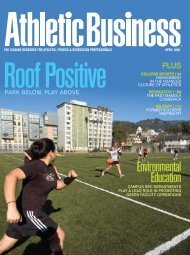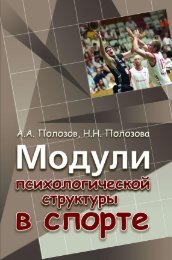You also want an ePaper? Increase the reach of your titles
YUMPU automatically turns print PDFs into web optimized ePapers that Google loves.
Encyclopaedia, that the purpose of the non<br />
-blocking hand in a double forearm block is<br />
not to support the blocking arm, but merely<br />
to bring the hand up in case it is needed as<br />
a secondary block, I foresee that it can<br />
actually have a support function. If you are<br />
to use the double forearm block and the<br />
attack were to push against your forearm, it<br />
is feasible that your blocking arm might tilt<br />
in such a way that it pushes against your<br />
"supporting" fist. While the non-blocking<br />
arm does not actually contribute to the<br />
force of the block, it could under certain<br />
circumstances have an augmenting<br />
support function. It is for this reason that<br />
the double forearm block is sometimes<br />
referred to as the “augmented block.”<br />
An interesting observation about the<br />
double forearm block is that in the patterns<br />
it is always done while stepping forward,<br />
never as a retreating technique. Also, in<br />
the patterns it is never (as far as I know)<br />
performed at middle section. In the<br />
patterns it is generally performed at high<br />
section in a walking stance, and<br />
occasionally at low section, but then only<br />
as a pushing block, usually in an L-stance.<br />
The ITF Encyclopaedia shows some<br />
examples of the double forearm block<br />
being used at middle section, so clearly it<br />
can be used at that height. That the<br />
patterns should only employ it at high<br />
section while stepping forward may<br />
suggest a strategic use for the double<br />
forearm block, which, unfortunately, is not<br />
If your reading this ...<br />
...so are 65,000* others!<br />
<strong>Do</strong>n’t miss the opportunity to advertise in<br />
what is the most popular magazine for <strong>Tae</strong><br />
kwon <strong>Do</strong> students, worldwide.<br />
Get in touch now!<br />
Email: adverts@totallytkd.com<br />
40 - <strong>Totally</strong> <strong>Tae</strong> <strong>Kwon</strong> <strong>Do</strong><br />
explained in the encyclopaedia, but is<br />
worth exploring. One application I use it for<br />
is to block high kicks. When used against<br />
high kicks the forward nature of the block<br />
helps to unbalance the opponent.<br />
Students are usually introduced to the<br />
double forearm block for the first time at<br />
5th geup when they learn the pattern Yul-<br />
Gok, which concludes with two double<br />
forearm blocks. The previous pattern, Won<br />
-Hyo, concludes with two forearm guarding<br />
blocks. Interestingly the forearm guarding<br />
block works in much the same way as the<br />
double forearm block, intercepting the<br />
opponent's attack at a similar angle, with<br />
similar mechanics at play. It would seem<br />
that these two patterns cover some of the<br />
same principles.<br />
…ooOoo…<br />
Sanko Lewis, 4th Dan in ITF <strong>Tae</strong>kwon-<strong>Do</strong> and<br />
black belt holder in Hapkido, is director of Research<br />
-and-Education for South Africa-ITF (SA-ITF)<br />
[www.taekwondo.co.za]. He is Kwanjangnim of the<br />
Soo Shim Kwan (a federation affiliated to the SA-<br />
ITF) and is an instructor at the main ITF <strong>Tae</strong>kwon-<br />
<strong>Do</strong> gym in Seoul, Korea<br />
[www.thewaymartialarts.com]. He works at a<br />
university in Seoul where he teaches subjects in<br />
English literature, academic literacy, and applied<br />
language and has a master’s degree in Creative<br />
Writing. Mr. Lewis can be contacted at<br />
saitf.research.education@gmail.com. Visit his blog<br />
at http://sooshimkwan.blogspot.com<br />
*Based on March, 2011 issue downloads

















